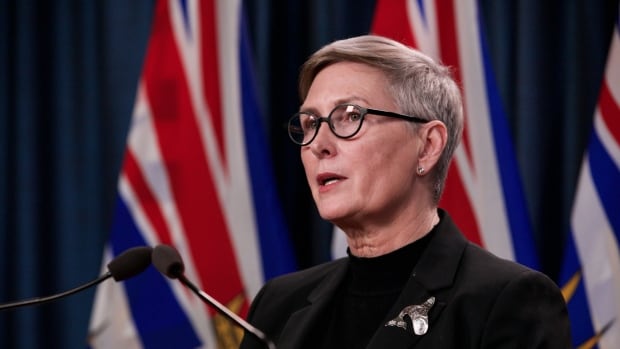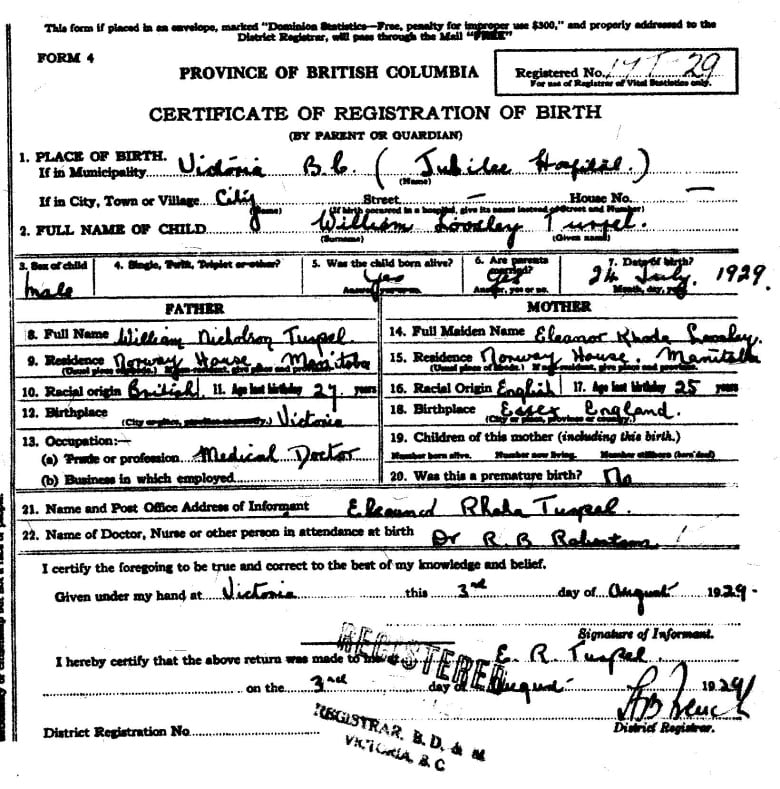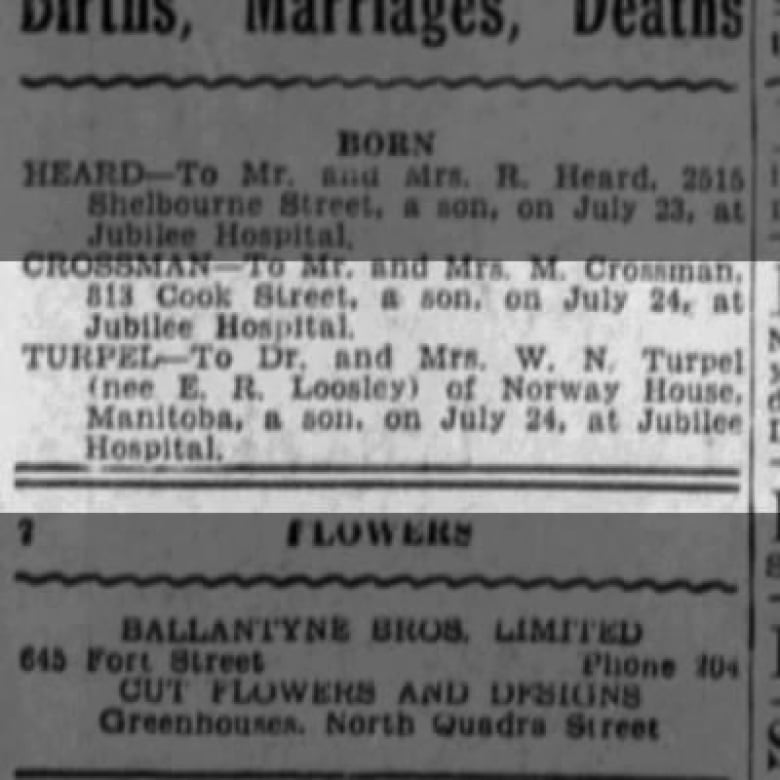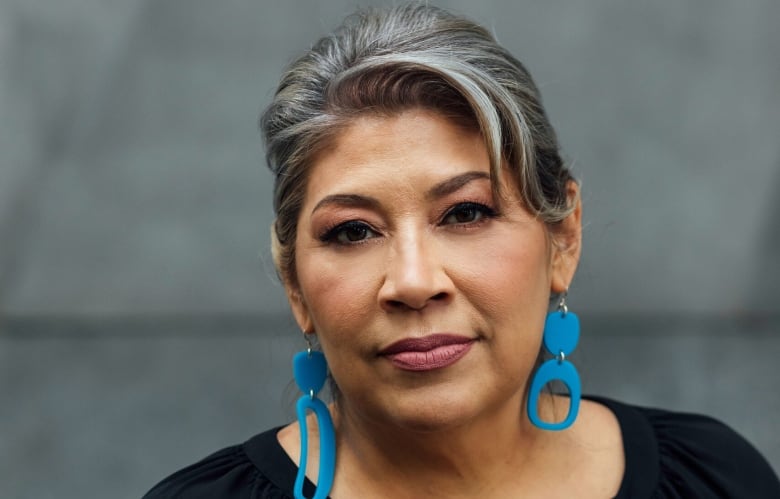
In an agreed-upon statement issued late last week, the Law Society of B.C. reprimanded Mary Ellen Turpel-Lafond and fined her $10,000, after she admitted she had made a series of false public claims about her accomplishments and history.
At the same time, the lawyer, former judge and academic suggests that a DNA test referenced in that agreement confirms the truth of her Indigenous ancestry claims.
“I am grateful to have this matter behind me. I was raised by a Cree father and Scottish mother,” Turpel-Lafond said in a statement provided to the Globe and Mail.
Turpel-Lafond did not provide that statement to CBC and has not responded to a request for an interview. Over the past few days, CBC has also been attempting to obtain a copy of that DNA test. On Tuesday, her lawyer replied, saying she is under no obligation to disclose her private medical information to anyone.
Some experts in the field of Indigenous identity and DNA say what has been reported about those tests may or may not confirm Turpel-Lafond’s public ancestry story.
“We have to have a specific test and the data to be able to adjudicate this,” Rick Smith, an assistant professor of anthropology at George Mason University, said. “From the information we currently have, there are multiple possible scenarios.”
“We need to see the DNA test,” said Kim Tallbear, a University of Alberta professor with expertise in DNA and its relationship to Indigenous identities. “Putting that out without providing the actual results and broader context doesn’t really tell us anything.
“Maybe this is true, but it doesn’t really tell us anything about her claims to being Cree or from [the] Norway House [Cree Nation].”
For decades, Turpel-Lafond presented herself as a Cree woman, a treaty Indian who was born and raised in Norway House, Man. She was seen as an Indigenous thought leader, having served as a judge, academic and advocate for children.
However, in October 2022, a CBC investigation found that some of Turpel-Lafond’s claims about her Cree ancestry, her treaty Indian status, the community where she grew up and her academic accomplishments were inconsistent with publicly available documents.
Following publication, the Law Society of B.C. launched an investigation.
In its news release announcing the agreement with Turpel-Lafond, the law society said it focused on claims she had publicly made about herself and her accomplishments since 2018, when she joined the B.C. law society. Turpel-Lafond’s lawyer said the law society abandoned its investigation into her heritage claims on the basis of the genetic testing.
In the agreement, Turpel-Lafond “admitted that she committed professional misconduct by making misrepresentations that she knew or ought to have known were false or inaccurate in her testimony at the National Inquiry into Missing and Murdered Indigenous Women and Girls and in her application to the Law Society of BC.”
For example, she claimed to have authored a book that was never published, claimed to have received an honorary degree that she never received and claimed to have a degree that she hadn’t earned. She said her errors were not intentional or designed to enhance her status.
The agreement also included reference to a DNA test Turpel-Lafond says she took in August 2023. In an apparent reference to that test, her lawyer told The Globe and Mail that the agreement with the law society “reflects what Mary Ellen has always said. She is Indigenous by birth.”
A DNA test
The agreement says that “the DNA test results indicated that genomic markers known to be disproportionately present in Indigenous populations were present in [Turpel-Lafond’s] DNA sequencing results.”
It goes on to quote a geneticist as saying, “the individual whose DNA was analyzed most likely has very recent ancestors with substantial Indigenous DNA.”
That geneticist, Simon Gravel of McGill University, told CBC when reached by phone that he was asked to review DNA results provided to him by Turpel-Lafond’s lawyer from a test that had been conducted by U.S.-based Nebula Genomics.
“I also, myself, did not verify whether this report is from [Turpel-Lafond],” he said. “This is something that they’re claiming.”
He said the test results are similar to what the public would receive from an Ancestry.com or 23 and Me test, where a percentage of DNA ancestry is assigned from the various regions of the world.
He said this sample indicated “substantial ancestry from the Americas,” meaning North, Central and South America. The reference populations include Cree, Raramuri, Pima, Maya, Chane, Karitiana, Chipewyan and eight others.
He said the test indicates a “broad level” of ancestry from the Americas. He said the data cannot link someone to a specific community or country.
“If the question was, ‘Does this person have Indigenous ancestry from populations in Canada from two generations ago?’ I could not say that with any level of confidence from this test,” Gravel said.
CBC asked if he could provide the specific percentage of Indigenous ancestry from the Americas. He said he knows the specific number, but he is not allowed to share it publicly. However, he did indicate it’s about 25 per cent, which would correspond to “a grandparent with substantial, like a majority, Indigenous ancestry.”
“The subject had concerns about sharing detailed information and so I’m giving you the information at the level that they were comfortable with sharing,” he said.
Gravel said the report didn’t indicate whether the Indigenous DNA came from the maternal line, the paternal line, or a mix of both.
Other experts raise questions
For decades, Turpel-Lafond has said she was Cree because her father, William Turpel, was Cree.
Publicly available records including William’s birth certificate, baptismal record and a birth announcement in a newspaper all indicate that he was born in Victoria, B.C., to Dr. William Nicholson Turpel and his wife Eleanor, who both are of primarily British descent.


When asked at the time of its investigation, Turpel-Lafond declined to explain to CBC how her father could be Cree in light of these records.
“I was raised to not embarrass, shame or cause harm to families, and not to interfere. I respect my parents and all members of my family and I will never call anyone out,” she replied by email. “Growing up we did not question biological parentage.”
In a 2022 conversation with CBC, Turpel-Lafond’s sister Melinda said “I believe [William and Eleanor Turpel] were not his parents. They just took care of him and raised him like he was their own,” though she also suggested her father could have been the product of an affair involving her grandfather and a Cree woman.
After CBC published its investigation, Turpel-Lafond issued a public statement saying Dr. and Mrs Turpel “adopted my father, who they knew to be a Cree child from Norway House [Manitoba].”
Kim Tallbear said it’s difficult to evaluate those stories in light of this DNA test, given that the results and the underlying data have not been provided to the public.
“It does not confirm the story she’s told at all,” said Tallbear. “It opens up our minds to maybe a whole other different story in her family tree.… There are secrets all over the place, but this is not, alone, enough to confirm what she has said. It really has to be matched up with research with people and documents.”
She said these sorts of tests can’t show connection to a specific nation or a specific family.
“So her better bet would be if she went and found a cousin or a grandparent or an aunt or uncle who actually had documented relationships to Cree people,” said Tallbear.
“If you can’t tie that DNA to … a particular nation, it doesn’t really tell you anything about who you are and who your family is.”

Rick Smith said it’s well known that consumer ancestry tests like the one presented by Turpel-Lafond cannot establish connection to a particular community.
“No legitimate Indigenous entity that I am aware of currently would recognize an ancestry test as a basis for adjudicating a claim for belonging,” he said. “An ancestry test is just about the fraction of nebulous Indigenous ancestry that one has that cannot be linked to any specific group.”
The anthropological geneticist said there is a DNA test available that would show links to a specific community and specific people — a family or lineal DNA test.
“These types of family tests or parentage tests are commonly used, even in the U.S., by tribes to determine in cases of adoption, or things like that,” he said.
‘Treaty Indian’ questions
The law society’s investigation was sparked, in part, by complaints about the fact that Turpel-Lafond had often publicly claimed to be a treaty Indian.
Michelle Good, a retired lawyer from the Red Pheasant Cree Nation who filed a complaint to the law society, said “treaty Indian” has a well-known and specific meaning.
“You can’t just make it up,” she told CBC. “In order to be a treaty Indian you or your ancestors must appear on those original treaty pay lists; you must be able to identify which of your ancestors was of a band that signed one of the treaties.”
Turpel-Lafond never identified a relative on the treaty list.
The agreed-upon statement from the Law Society of B.C. says Turpel-Lafond acknowledged that “many people define ‘treaty Indian’ as a person with status under the Indian act,” but “referred to herself as a ‘treaty Indian’ because she identifies as Cree.”
Norway House connection
The statement also indicates Turpel-Lafond incorrectly claimed that she had transferred her membership from Norway House earlier in her life.
“As the lawyer was not a registered ‘member’ of Norway House, it was inaccurate to say that she had ‘transferred’ her membership to MLCN [Muskeg Lake Cree Nation].”
Throughout her career, Turpel-Lafond had publicly discussed her connection with Norway House. For decades, she told media outlets she had been born and raised in that community.
However, family members and publicly available records, including voting rolls and school yearbooks, indicate that she and her family actually grew up in Niagara Falls, Ont.
CBC asked Turpel-Lafond during its 2022 investigation whether she was born in Norway House or Niagara Falls. She declined to answer.
When asked about the inconsistencies back in 2022, Turpel-Lafond said, “I don’t check every media story about me or my experience/history, nor am I accountable for how media or others portray me.”
Regarding questions about her ancestry, she recently told the Globe and Mail what she told CBC during its investigation.
“I should not have had to prove who I am,” she is quoted as saying.